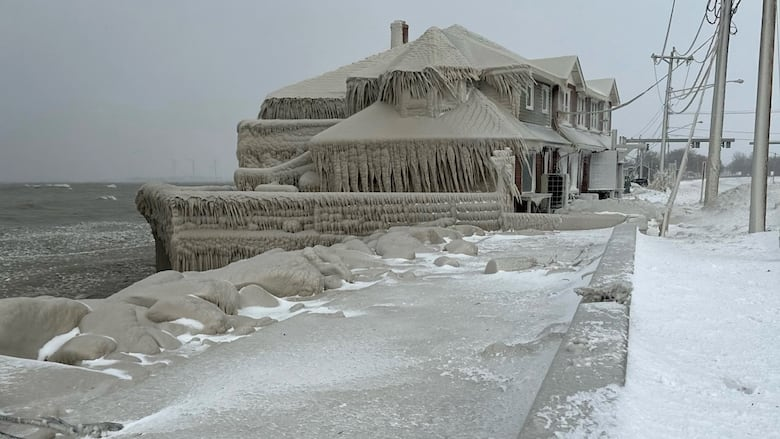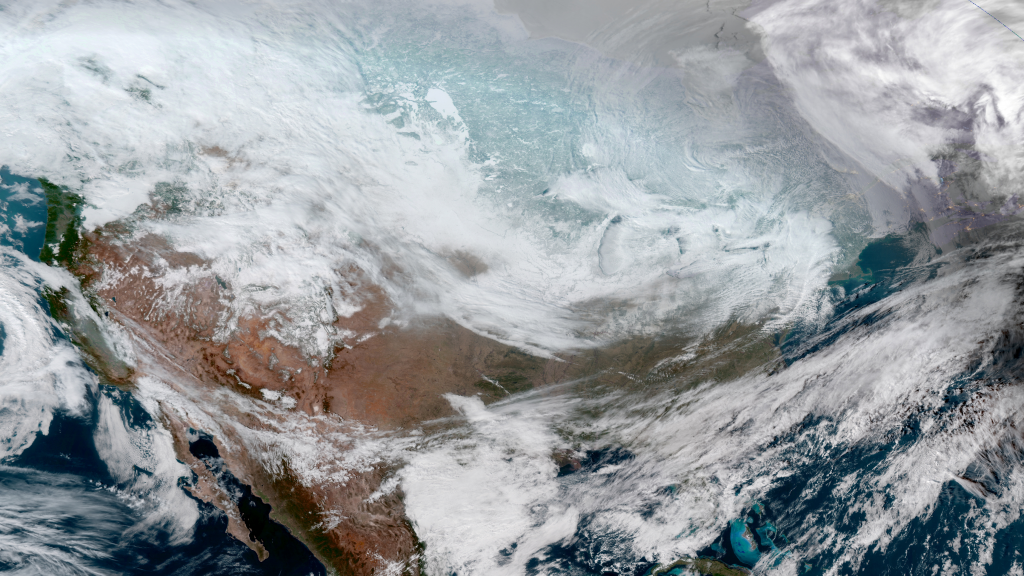Surprising link between Arctic warming & cold blasts in N.America, Europe: study

Some parts of the Arctic are warming up to four times faster than the rest of the planet, with many northern hemisphere regions seeing milder winters. However, a new study suggests that, under certain conditions, a warming Arctic could not only reduce cold-air outbreaks but also surprisingly intensify winter cold blasts in places like Europe, North America, and parts of Asia.
The study, published this month in Environmental Research: Climate, looks at how Arctic amplification (AA)—the process where melting snow and ice expose more dark land and water, which absorb heat from the sun instead of reflecting it—could alter the polar vortex and even cause more intense cold spells in places that aren’t usually hit by extreme winter weather.
“It is widely accepted that Arctic amplification (AA)—enhanced Arctic warming relative to global warming—will increasingly moderate cold-air outbreaks (CAOs) to the midlatitudes,” the study said.
“Yet, some recent studies also argue that AA over the last three decades to the rest of the present century may contribute to more frequent severe winter weather including disruptive cold spells.”
How a weakened Polar Vortex could drive cold south
To do the study, the research team used advanced climate models to simulate different scenarios. These models allowed them to test how factors like a weakening polar vortex and the loss of sea ice could lead to harsher cold spells in places further south.
They also combined these simulations with real-world data to track how changes in the Arctic could ripple out and affect Europe, North America, and parts of Asia.
There results revealed that as the Arctic warms, the polar vortex becomes weaker and more unstable, allowing cold air to escape the Arctic, and travel south potentially leading to more frequent and severe winter weather in lower latitudes.
This means that areas like Europe, North America, and parts of Asia could see more frequent and intense cold blasts, even as the Arctic itself continues to heat up.

The polar vortex refers to a large, swirling mass of cold air and low pressure that surrounds the Earth’s two poles. It typically spins counterclockwise, helping to keep the cold air contained in the Arctic and Antarctic regions. However, when the vortex weakens or shifts, the frigid air travels to other parts of the globe.
The authors said the study is important as it helps better understand how the polar vortex will change over time allowing better predictions of cold spells allowing authorities to better prepare.
“The need is growing for early predictions of atmospheric circulation regimes likely to produce extreme weather across diverse socio-economic sectors that can significantly benefit from advanced warnings,” the study said.
Need for better cold-weather forecasts
The paper’s authors also says in light of events in recent years, where cold weather events have caused disruptions ranging from power outages to dangerous travel conditions to fatalities, it’s important to improve forecasting.
“Even if [cold-air outbreaks]s become less frequent and/or less intense overall, their impacts can be more significant as society under continued global warming becomes increasingly less prepared as [cold-air outbreaks]s penetrate into regions ill-equipped to respond,” the study said.
“Given the potential high impact on large populations, further research is essential to improve understanding of climate-change-related teleconnections and their two-way interactions on the atmospheric dynamics responsible for the onset of [cold-air outbreaks]s.”
Comments, tips or story ideas? Contact Eilís at eilis.quinn(at)cbc.ca
Related stories from around the North:
Canada: 2024 Arctic Report Card: “New Regime” of warming and unpredictable changes, Eye on the Arctic
Greenland: Alarming, above-average ice loss in Greenland due to rising temperatures, Eye on the Arctic
Norway: Polar heat record. July average above 10°C, The Independent Barents Observer
Sweden: High risk of wildfires in many parts of Sweden, including North, Radio Sweden
United States: Bursting ice dam in Alaska highlights risks of glacial flooding around the globe, The Associated Press



